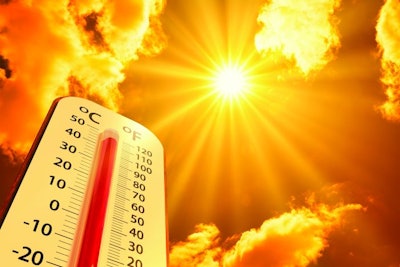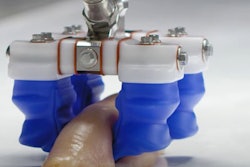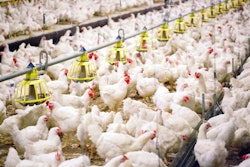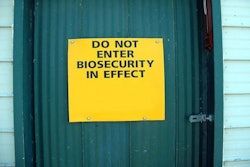
The poultry industry will need to increasingly adapt if it is to survive and flourish in the face of the emerging challenges resulting from climate change.
Production will need change at bird level, for example by increasing genetic resistance, and at farm level, with solutions that counter the changing geographic range of diseases, or to reduce energy use and greenhouse gas emissions.
Numerous adaptations are already being examined. New ways of working, however, will also need to take into account the One Health concept and animal welfare, and will also need to limit competition between demands for human and animal food in the face of less favorable climatic conditions.
The issues facing the industry were discussed by Anne Collin, of the French National Institute for Agriculture, Food and Environment (INRAE), at the World’s Poultry Congress, held in Paris in August 2022. Solutions discussed ranged from adapting birds and diets, to building design and energy saving.

Making birds more able to adapt
Today’s broilers and layers are more susceptible to heat stress, which can compromise production, quality and efficiency and, as temperatures rise, the problem will become more common.
A way of addressing this could be to improve genetics, introducing adaptive traits in selection programs and building resilience through early heat acclimation strategies.
Research is ongoing to find genetic solutions to improve resistance to heat stress. Studies in both broilers and layers have examined the effects of genes involved in feather coverage and quality. The naked neck, scaleless and frizzle genes have been studied as ways of reducing feather coverage and increasing surface heat dissipation, enabling birds to better cope with higher temperatures.
Application of this approach, however, has been limited, probably due to the difficulty of introgressing a mutation into commercial poultry lines without affecting their genetic value, and by the likelihood of consumers rejecting products coming from partially-feathered, or unfeathered, birds.
Another way to improve birds’ thermoregulatory abilities would be through thermal manipulation, an early phenotype programming strategy comprising cyclic increases in egg incubation temperature and resulting in an altered physiological response after hatching.
Cyclic increases in incubation temperature, mimicking the fluctuating conditions found in nature, have been found to improve thermal tolerance in male broilers, while minimizing hatching defects.
For thermal manipulation to be successful, cyclicity and temperature increases, however, must be carefully controlled. If temperatures are raised during early embryo development, or constantly higher temperatures are used, hatching defects may become more common.
Incubator humidity must also be raised during higher temperatures to prevent dehydration, and factors including breeding age and genetics can also influence the procedure’s success. The fine tuning needed to successfully carry out thermal manipulation may explain why this, otherwise simple, procedure is not currently more widely used.
Resistance to cold
Making birds more resistant to cold would be particularly beneficial when birds are young and energy expenditure on heating is highest.
In experimental facilities, decreasing temperature at placement from 32oC to 28oC has been shown to lower gas use by 11%, however, electricity use for ventilation rose by 4%.
Birds can be made more resistant to cold through cold embryo stimulation immediately prior to hatching. This was found to have a positive effect on male chicken performance, even in a cold starting environment; however, the results for females were less positive, and some welfare parameters were not met.
The implementation of such a strategy would need to be carefully fine-tuned and tested against multiple criteria before being applied to commercial production.
Making savings, reducing energy
Using cooling pads or fogging and misting systems in closed poultry houses during hot periods requires both water and energy, and several alternative methods are already under examination.
A bird’s temperature can be reduced by, for example, sprinkling it with coarse water droplets. In this way evaporative heat loss occurs directly from the bird’s surface.
Other studies have looked at optimizing ventilation and regulating air velocity in response to ambient temperatures.
Conventional broiler houses could limit energy use by installing more efficient heating systems. Air exchangers, for example, that recover heat from exhaust air to warm incoming air result in considerable energy savings.
Poultry houses should be insulated to better regulate temperature, and fine tuning the environment to limit the energy needed for heating, keeping ammonia levels low, and maintaining the litter as dry as possible are all beneficial.
The microclimate around the building will be impacted by its orientation. The microclimate can also be influenced through tree planting or erecting wind brakes to create shadow and limit air temperature when birds are reared free-range.
Climate change, disease and health
Climate change may result in the entry of pests and disease into areas where they were not previously present.
The incidence of avian influenza (AI) in Europe, for example, has increased dramatically over the last couple of years. This could continue as birds change their migratory paths, and vaccination may become necessary if mass slaughter is to be avoided.
Climate change, combined with the popularity of backyard poultry farming, could provide the ideal situation for a greater incidence of avian mite infestation in Asia, particularly as the local industry expands. Tropical Poultry Mites may act as vectors for other disease, making their spread a threat to both human and animal health. Greater resistance to acaricides may mean that plant extracts, light regimens and gas may be needed for their control.
Sustainable poultry production driving industry advances


















